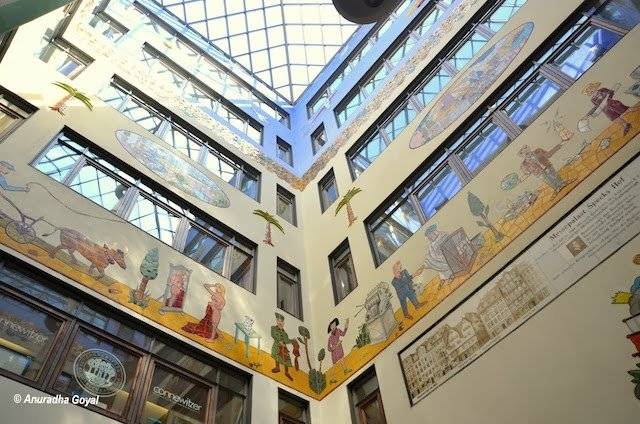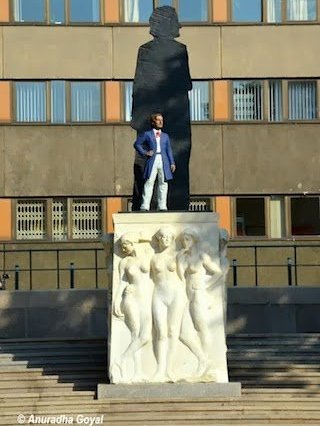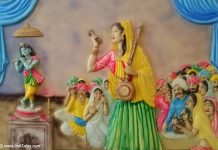Leipzig is a small city in the state of Saxony in Germany, less than a couple of hours by road from Berlin. It is a city known for its musicians over the ages with museums and music festivals dedicated to them around the year. To me, this was the first that the whole city is organized around its musicians and their music – literally.

Leipzig Germany – City that Celebrates Music
There is a 5 km trail, called the music trail that goes through more than 30 musical spots in the city. It is marked with stainless steel markers in the shape of musical notes on the ground along with a board explaining the place in both German and English. You can simply follow the marks and learn about the musical heritage of the city. Spots include churches, opera houses, the Musical Instruments Museum, concert halls, archives, monuments, and houses of musicians. Some of the famous names of the Leipzig Music heritage include Bach, Mendelssohn, Schumann, Wagner, Mahler, and Greig.

My journey to the city began with a hearty meal at Panorama Restaurant that as its name suggests gives a panoramic view of the city. From its rooftop, you can admire the green cover of the city, its rail lines, the spires of its churches, and its black and red slanted roofs. And maybe identify some of its landmarks if you know its history and geography a bit.
St Nicholas Church

The St Nicholas Church in the city is known for the peaceful revolution that began in 1982 and eventually led to the fall of the Berlin wall in 1989. The interiors of this church are soothing with pale pink tall pillars pistachio green treetops and white furniture. A similar pillar in white standing by the side of the church marks the place where the revolution began. Metal plaque on the floor with multiple footmarks and the date of October 09, 1989, marked on it commemorates the revolution that began here at this spot.
Art Installations at Leipzig

Business or trade has always patronized Art, and this city is a living example of that. It was a city of traders since the times of the Holy Roman Empire. It still holds an annual trade fair that is popularly referred to as the mother of trade fairs. Many of the present buildings that are now shopping centers or restaurants were trader’s or trading houses called passages. They can be identified through an open courtyard in the middle that was supposed to be the place to unload the horse-drawn carriages. The gates are just wide enough to let these carriages come in. We visited a couple of them and saw some interesting artwork on the walls of these passages.

Modern Art
Like most European cities, modern art installations can be seen everywhere in the streets of the city. Including one that fulfills your wish when you touch its huge metallic shoe. It was summertime when I was there. There was music being played in many places, by local as well as visiting musicians. St Thomas’s church is the place where the musical legacy of the city began. Bach, one of its most famous names was associated with this church. 19th CE musician Richard Wagner’s monument has a small figure of his with a huge shadow behind him.

We finished our sojourn with a sumptuous dinner at story-rich Auerbachs Keller, but that is a story for another day.

Recommend you read the following Germany Tourist Attractions on my Travel Blog.
Bastei Rocks of Saxon, Switzerland
Admiring the Meissen Porcelain
Panometer Dresden – Recreating The Dresden of 1756
Spinnerei – From Cotton To Culture
Malgorzata Chodakowska: Sculpting Wine














Musical Instruments Museum is very nice, I am very interesting in this place when I am going to Germany surely I will visit this place
Yes, Sonu, Leipzig is a uniquely musical city.